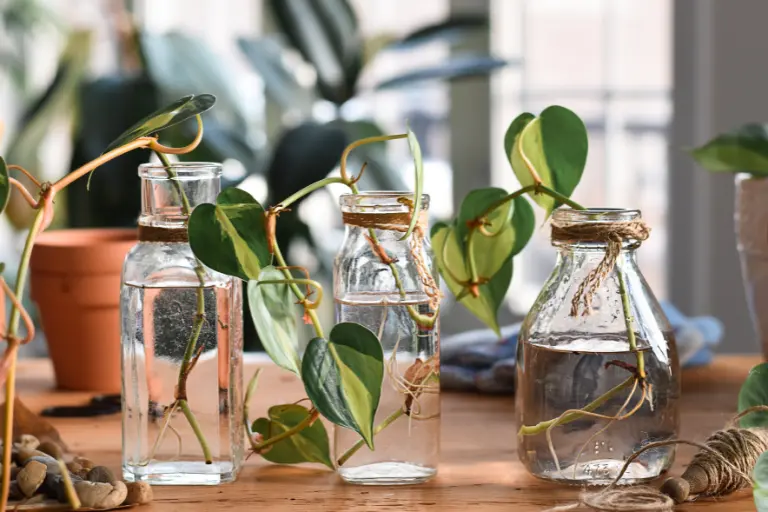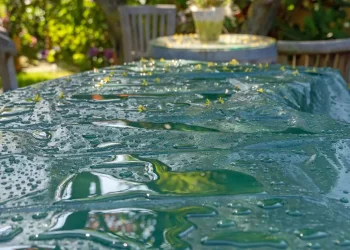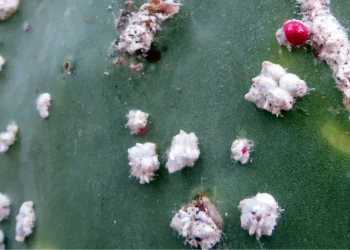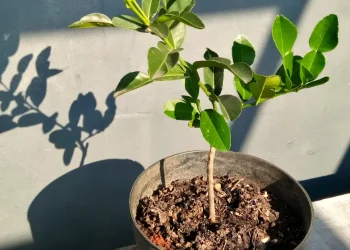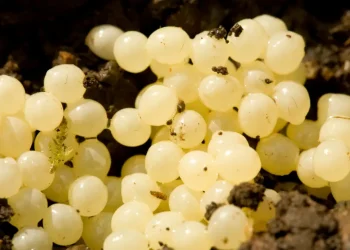My mum and I always loved to propagate plants. Just a few snips, and before you know it, you have a completely separate, full-grown plant. To this day, I got a palm at my apartment, which I got from my mum as a cutting when I was first moving away – what can I say, it got pretty big over the years.
Mum made it look so easy. So there was nothing to get me out of the mistake of thinking that propagating is simple. A snip here, some dirt there, and a dash of time, and voilà! A new plant emerges. But now, as I am more experienced, I can say that there is a whole load of questions on every step of propagating your plants.
One such question, and a very important one, is whether plant cuttings need light. But it wouldn’t be gardening if there was a simple answer to that question. Some plant cuttings do need light right from the start in order to grow, while others will be just fine without it.
Growing plants from cuttings is a great way to expand your home with new plants nearly for free. And understanding their lighting needs is just one crucial piece of the puzzle, which we’ll explore to the core in this article.
Do Plant Cuttings Need Light?
When it comes to propagating plants from cuttings, we can divide three approaches – stem cuttings, leaf cuttings, and root cuttings. Each of these cuttings has its own unique needs when it comes to light.
The first two types – stem and leaf cuttings both require light to successfully root and keep growing. Although they are some exceptions to the rule.
Stem Cuttings
Stem cuttings are a popular choice for propagation. When you are propagating from a stem, you usually include also a leaf or two. Because there are leaves, the plant isn’t fully dependent on the nutrition from the soil, which can kickstart its growth. The presence of light triggers the process of photosynthesis, where they convert light energy into the essential nutrients needed for root development and new leaf growth.
However, if you are propagating a wood stem without any leaves attached, the cutting will also do just fine without direct light, at least during the initial stages of propagation. Wood stems do not have active chlorophyll-containing tissues that enable them to convert light energy into nutrients through photosynthesis.
In fact, exposing wood stems to direct light can be detrimental, as they are more dependent on stored nutrients within their tissues for survival and initial root development. Excessive light can lead to increased transpiration and water loss without the ability to replenish nutrients through photosynthesis, potentially hindering their ability to establish roots and survive.
Leaf Cuttings
Next on the list are leaf cuttings, which, you guessed it, come from individual leaves of a plant.
The leaf contains special cells called meristematic cells, hidden away in those seemingly ordinary green tissues. These cells possess the incredible ability to transform themselves into various plant tissues, like roots, stems, and leaves.
If you gently detach a leaf from the parent plant and provide it with the right conditions, these cells will slowly formate into roots.
When we talk about the right conditions, leaf cuttings require indirect or diffused light. A windowsill with a sheer curtain or a spot under a shade cloth can do wonders for their growth.
The leaf-cutting won’t be able to start photosynthesizing right away. Photosynthesis requires a fully developed and functional plant structure. So, for now, it will get all its nutrition right from the soil and focus on rooting. But as soon as it develops functional roots, it can start photosynthesizing, which is also why proper light is important at this stage.
Root Cuttings
Root cuttings are often considered one of the safest and most reliable methods of propagation, with a high probability of successful growth. They already have an established root system. This means they can immediately draw upon stored nutrients and water from the roots, giving them a head start in establishing themselves in the soil or propagation medium.
They don’t need light right from the start. After all, the cutting will be covered with soil. So even if place the pot in a sunny place, there won’t be any advantage.
Once new shoots begin to emerge from the root, they will benefit from indirect or diffused light. They’re very fragile, so careful with direct sun so you don’t burn them.
Cuttings and Direct Sunlight vs. Diffused Light
Now that you understand that sunlight is very important not only for cutting but for the continuous growth of your plant, the question is what type of light is the best and provides the most benefits for cuttings.
Direct sunlight may seem like the obvious choice, with its abundance of light energy and potential to accelerate growth. However, this can also be a double-edged sword. For some delicate cuttings, direct sunlight can be too intense, leading to excessive transpiration and water loss, hindering their ability to establish roots and thrive.
Once the plant matures, for some types of plants, direct sunlight might be ideal, but it usually does more harm than good.
The amount of sunlight cuttings needed can vary depending on the specific type of cutting, the plant species, and the stage of propagation. But for the initial phase of rooting, providing cuttings with 12 to 16 hours of bright, indirect light is a good place to start – this usually means leaving the container behind the window all day long.
Can you Keep Cuttings in the Dark?
Leaf-cutting and green stems will need adequate light right from the start, so keeping them in the dark won’t be effective. Without light, they won’t get the energy needed to create a full root structure.
However, when you are propagation from a root cutting or using a woody stem, you don’t need to worry about light until the plant begins to sprout.
Dark rooting is believed to reduce the risk of rot and excessive water loss in certain cuttings. By placing the cuttings in a dark or dimly lit environment, their need for water is reduced, and they can focus on developing roots without the stress of transpiration.
But you should still keep a close eye on your newly emerging plant and introduce it to light as soon as begin to develop.
Do Cuttings in Water Need Light?
Apart from the three methods of propagating (stem cuttings, leaf cuttings, and root cuttings), you can also choose a propagating medium.
One method involves putting the cutting in water for the first few days. This comes with a few benefits, especially it is a lot simpler, and it promotes faster root development compared to soil propagation.
Cuttings placed in water rely on stored nutrients within their tissues to sustain them during the rooting process. And light provides them with additional energy to produce roots.
As always, you should opt for subtle, indirect light. In fact, not only the cutting is very fragile, but direct sunlight can sometimes lead to excessive algae growth in the water, which can be harmful.
Conclusion
Successful propagation through cuttings hinges on understanding the light requirements. Both stem and leaf-cutting will generally benefit from bright, indirect light. While root cuttings don’t require light initially but will eventually need it.
Growing new plants from cutting is a great way to expand your home garden for nearly no cost. And it also feels a lot better when you see your little curring growing day by day.




